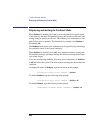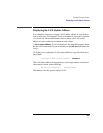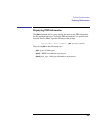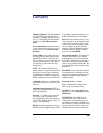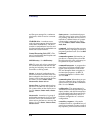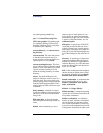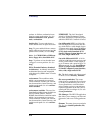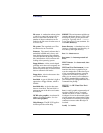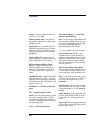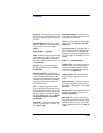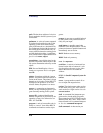
210
Glossary
and flat spots arranged in a continuous
spiral track, which is read at a constant
speed.
CD-ROM drive A random-access,
read-only, mass-storage device that uses
removable CD-ROM discs. The drive
contains a semiconductor laser for read-
ing data optically and an embedded con-
troller with a SCSI interface.
Central Processing Unit (CPU) The
part of a workstation that interprets and
executes instructions.
child directory See subdirectory.
click To press and release a mouse but-
ton. The term comes from the fact that
pressing and releasing most mouse but-
tons makes a clicking sound.
cluster A group of workstations con-
nected via a Local Area Network (LAN).
One workstation, the cluster server, per-
forms as a file-system server for the clus-
ter clients. See also cluster client,
cluster node, cluster server.
cluster client A cluster node that does
not have a local HP-UX file system. Its
file system resides on the cluster server.
See also cluster, cluster node, cluster
server.
cluster node A member of a group of
workstations connected via a Local Area
Network (LAN). One workstation, the
cluster server, performs as a server to the
cluster. See also cluster, cluster client,
cluster server.
cluster server A workstation that pro-
vides file access, login access, file trans-
fer, printing, and other services across a
network to a defined cluster of systems
(cluster nodes) connected via a LAN.
See also cluster, cluster client, cluster
node, host.
command An instruction that you enter
into the system at a prompt, to execute a
program or perform a task. See also shell
command.
command argument Information you
provide on a command line to describe
the object (usually a file or directory) to
be operated on by the command.
command interpreter A program that
reads lines of text from standard input
(typed at the keyboard or read from a
file) and interprets them as requests to
execute other programs. An HP-UX
command interpreter is called a shell.
See also shell.
command option Information you pro-
vide on a command line to indicate any
special action you want the command to
take. See also default.
configuration The arrangement of a
workstation or network as defined by the
nature, number, and chief characteristics
of its functional units. More specifically,
the term configuration may refer to a
hardware configuration or a software
configuration.
control key sequence A keystroke
combination used as a shorthand way of
specifying commands. To enter a control
key sequence, you hold down the control



